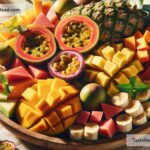Celebrating the Revival of Ancient Grain Porridge in Ethiopia
Ethiopia is a country full of rich culture, stunning landscapes, and delicious food traditions. One of its oldest food traditions is porridge made from ancient grains. These grains, which have been part of Ethiopian food for thousands of years, are now being revived in kitchens across the country. This revival is bringing health benefits, preserving history, and helping farmers grow crops that are good for the environment.
Ancient Grains: A Look Into the Past
For centuries, Ethiopians have relied on grains such as teff, barley, millet, and sorghum to make their meals. These grains have been grown in the country for thousands of years and are perfectly adapted to Ethiopia’s climate. They are resilient and can grow in dry conditions, which makes them important for farmers, especially with the challenges of global climate change.
Ancient grains are different from modern processed grains like white rice or refined wheat. They are not stripped of their nutrients, meaning they are packed with vitamins, minerals, and fiber. Teff, for example, is a small grain native to Ethiopia that has become famous worldwide as a “superfood.” It is naturally gluten-free, rich in iron, and a great source of energy. Sorghum and barley are also high in fiber and nutrients, making them excellent choices for creating healthy, nutritious meals.
Porridge: A Comforting Ethiopian Tradition
In Ethiopian households, porridge is more than just food—it is comfort, tradition, and a symbol of hospitality. Families often start their mornings with bowls of steaming porridge, made from freshly ground ancient grains mixed with water or milk. A little butter, honey, or spices like cinnamon are added to enhance the flavor. Each family and region has its own way of preparing it, showcasing Ethiopia’s diversity.
While porridge is simple to make, its simplicity is part of the appeal. It is filling and nourishing, making it especially important for children and the elderly. In the past, porridge was celebrated as everyday food, but over time, modern foods like bread and pasta became more popular. Now, however, Ethiopians are returning to their roots and celebrating porridge made from ancient grains once again.
Why Ancient Grain Porridge Is Making a Comeback
So why is porridge made from ancient grains gaining popularity in Ethiopia? There are several reasons. First, people are becoming more aware of the importance of eating healthy. Unlike processed foods, porridge made from ancient grains is packed with nutrients that help people stay strong and energized.
Second, ancient grains are great for the environment. Modern crops often require plenty of water and chemicals to grow, but ancient grains like teff and sorghum are naturally resilient. They require less water and are better suited to Ethiopia’s dry conditions. This makes them a sustainable choice that helps farmers and protects the land.
Third, as the world becomes more globally connected, Ethiopians are embracing their identity and cultural heritage. Food is an important part of that heritage. By bringing back traditional foods like porridge, people are celebrating Ethiopia’s history and unique contributions to the world.
The Ethiopian government and local organizations are also supporting the revival. Programs that teach farmers how to grow ancient grains are on the rise, and schools are educating children about the health benefits of traditional foods. Many restaurants and food markets now proudly feature porridge made from teff, sorghum, or barley, both as traditional dishes and with modern twists.
A Source of Health and Pride
For many Ethiopians, eating ancient grain porridge is more than a trend—it’s a perfect balance of health, culture, and sustainability. It reconnects people with their history while promoting good health. Thanks to the fiber from these grains, porridge supports digestion and keeps people full for longer. The nutrients help boost energy levels, making it wonderful for working adults, busy students, and growing children.
And it isn’t only Ethiopians who are enjoying the benefits of ancient grains. Around the world, teff is becoming famous as a nutritious alternative for gluten-free diets. Ethiopian restaurants in cities like Washington, D.C., and London often serve teff-based dishes, introducing the beauty of Ethiopia’s food traditions to international communities.
Preserving Tradition for Future Generations
The revival of ancient grain porridge in Ethiopia is exciting, not only because of its health benefits but also because it represents a larger movement to preserve traditional food. In a modern world, it’s easy for valuable traditions to be forgotten. By teaching young Ethiopians about ancient grains and how to make porridge, older generations are passing down knowledge that will keep Ethiopia’s culture alive for years to come.
Porridge is also becoming a symbol of Ethiopian pride. People celebrate its history in home kitchens, restaurants, festivals, and even social media. These efforts are helping the rest of the world recognize Ethiopia’s contributions to global food culture.
Conclusion
The revival of ancient grain porridge in Ethiopia is more than just food—it’s a celebration of history, culture, health, and sustainability. As Ethiopians rediscover the beauty of making porridge from teff, barley, sorghum, and millet, they’re creating a future that honors their past while supporting their health and their environment. Whether enjoyed as a traditional dish or reinvented in a modern recipe, porridge truly represents the heart of Ethiopia’s rich food traditions. By celebrating this revival, Ethiopians are reminding the world that some of the best foods come from the wisdom of the past.


